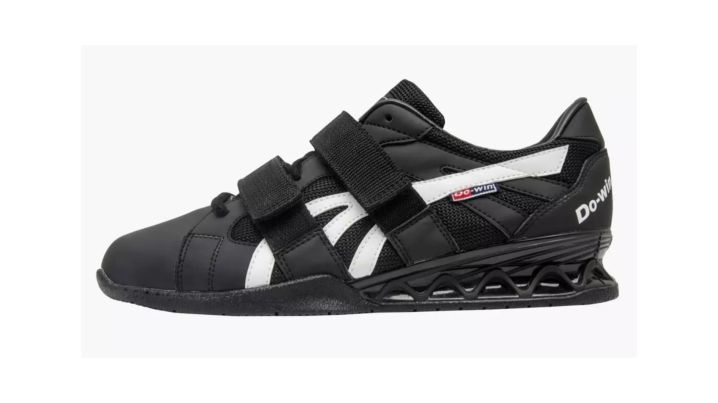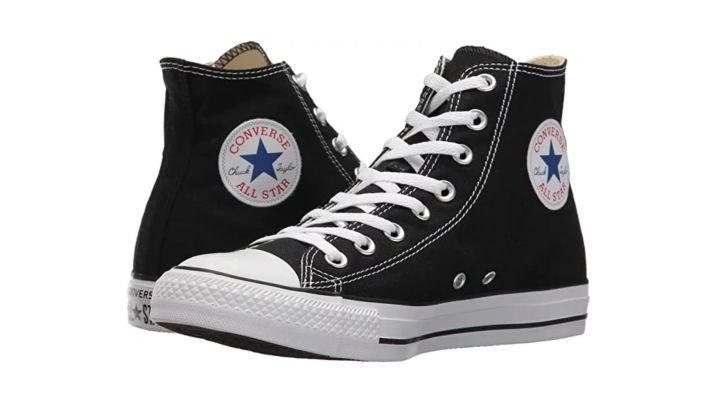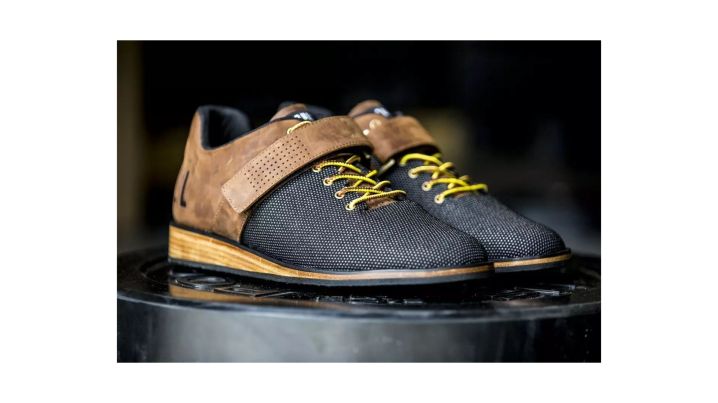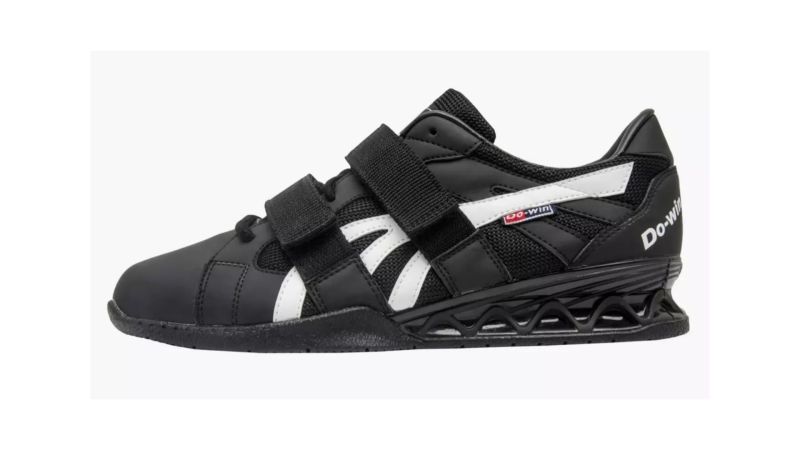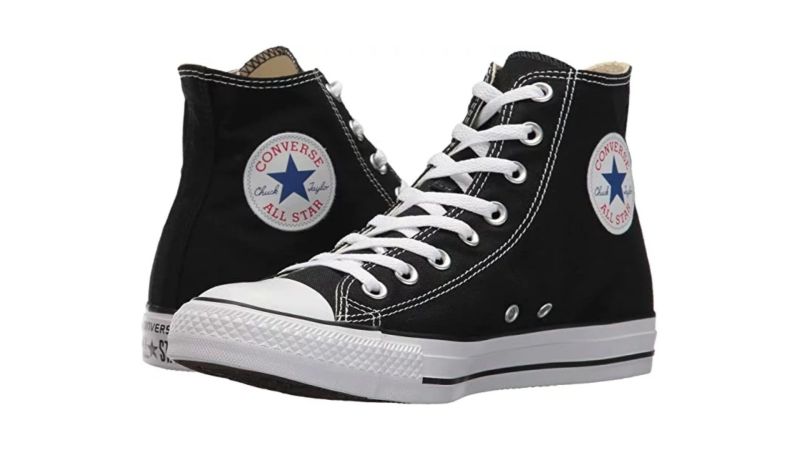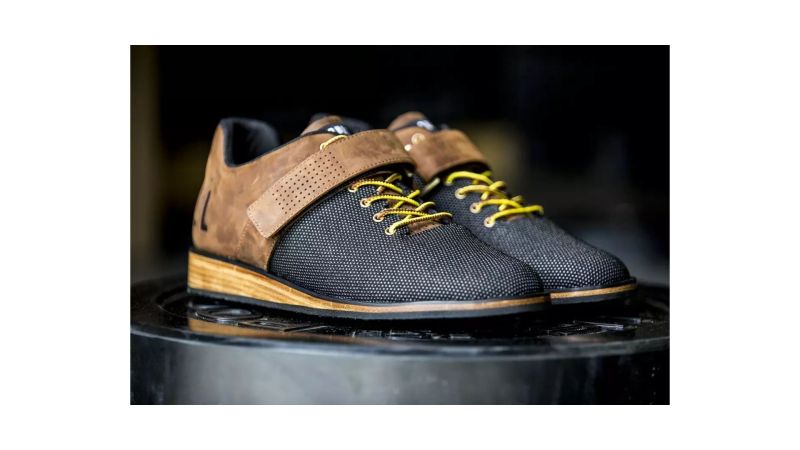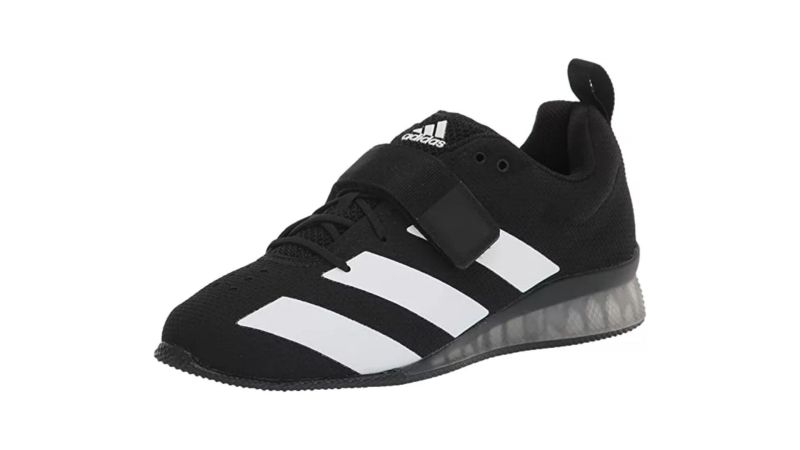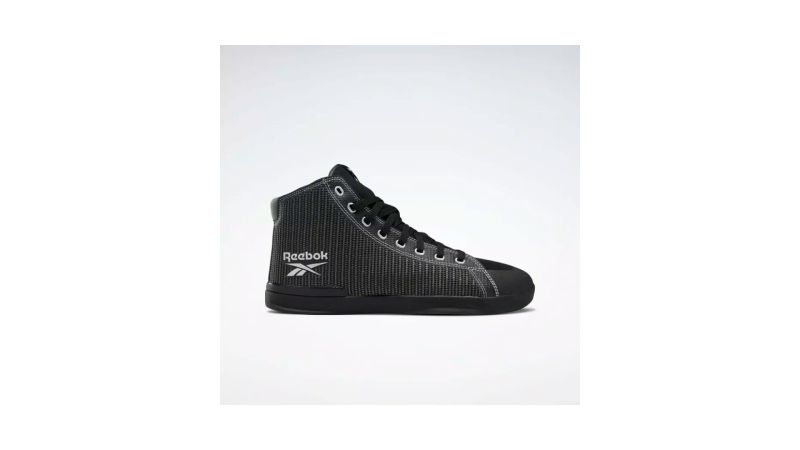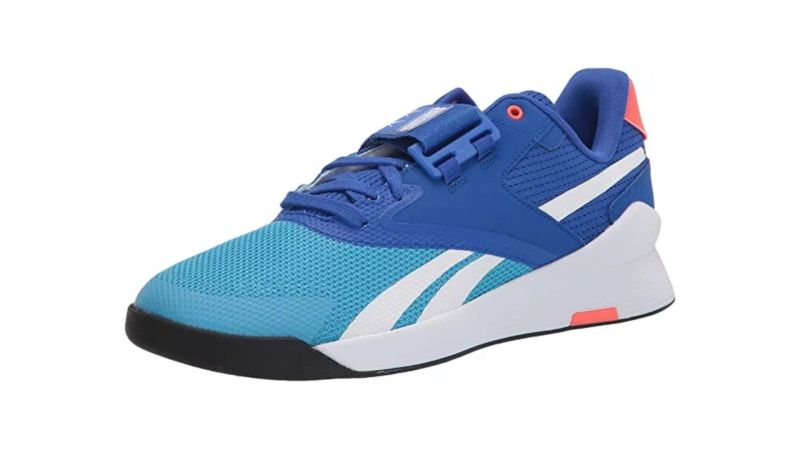We may earn revenue from the products available on this page and participate in affiliate programs.
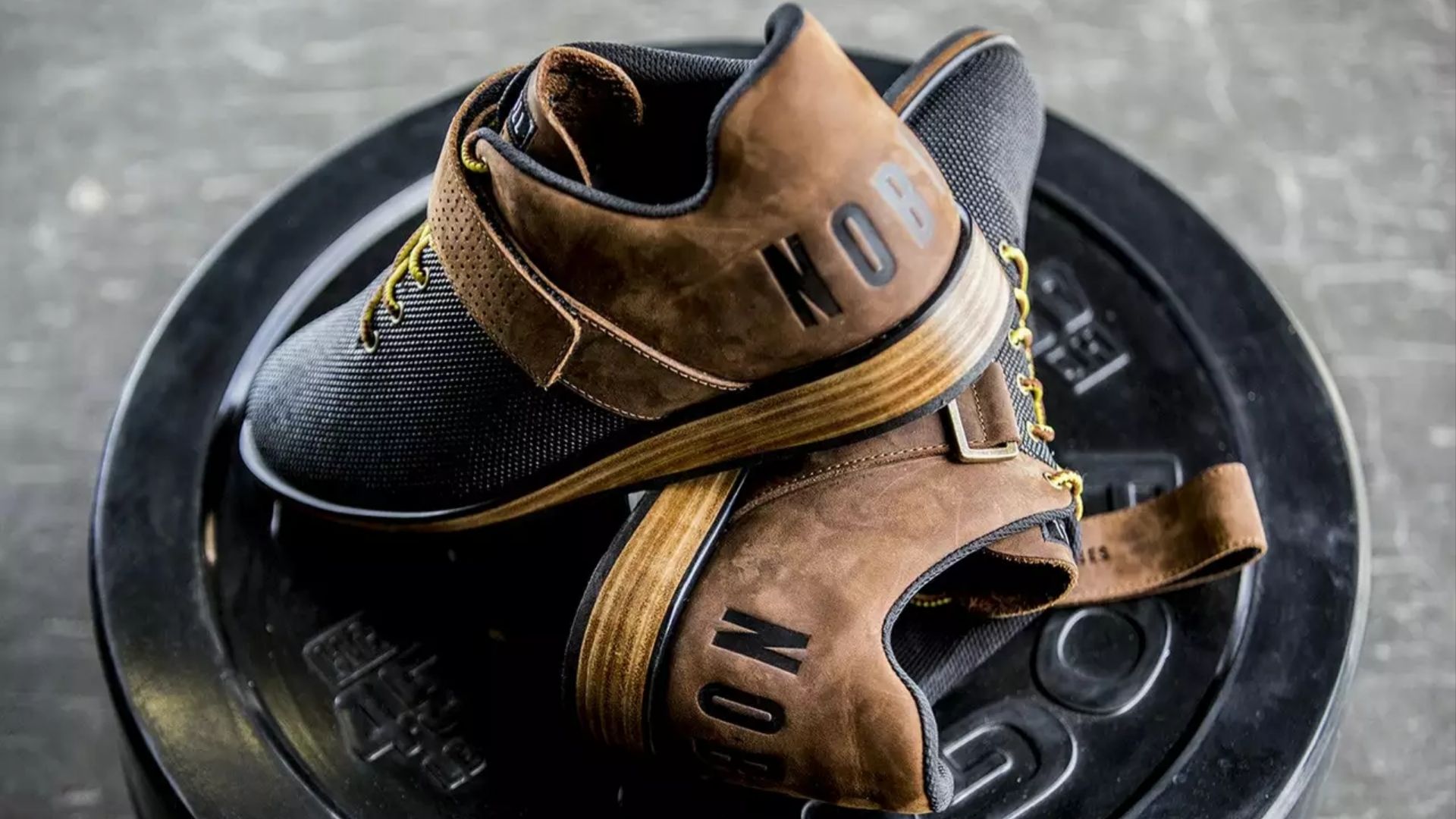
The first time I ever saw someone wearing weightlifting shoes, I probably thought something along the lines of, “aw, he got the velcro!” That was quickly followed by acknowledgment that the dude knew something I didn’t because he was warming up with my max.
Here’s the thing: those funny-looking shoes you see people carrying around the gym aren’t a thrift-shop special and they aren’t for show. Weightlifting shoes are just as legitimate as belts and protein powder — and if you want to get strong, you’ve come to the right place.
We’ll be the first to say that the road to Strongtown, USA starts with good form. It requires hard work, dedication, and humility. But the right gear can make a difference, too. If you’ve immersed yourself in the world of powerlifting, researched the Olympic greats, and memorized the words of Jim Wendler, Dave Tate, Stefi Cohen, and Oleksiy Torokhtiy, you’re ready to invest in your fitness with the proper equipment.
Best Overall
Rogue Do-Win
Best Value
Converse Chuck Taylor All Star
Editor’s Choice
Nobull Lifter
Best Olympic Weightlifting Shoe
Adidas Adipower II
Best Powerlifting Shoe
Reebok Power Lite Mid
Best Weightlifting Shoes for CrossFit
Reebok Lifter PR II
Why you should trust us
As a lifetime member of the Marine Corps’ max-max-relax club, I can proudly say that I’ve never performed fewer than 20 pull-ups on a PFT, never been so unpopular that I didn’t receive a perfect score on those worthless crunches, and never run any faster than absolutely necessary to get a first-class score while maintaining my hard-earned leg day gains. Here at Task & Purpose, the quest for thickness continues. We take it upon ourselves to bring you gear guides on the best fitness equipment out there, whether you need a barbell or set of dumbbells for your home gym or just a gym bag to keep your gear organized.
Types of weightlifting shoes
Weightlifting shoes are different from the shoes you wear to run or work out with the machines and dumbbells at your gym. They’re specialized equipment that works in very specific ways, so it’s important to use them properly. While the differences in various weightlifting shoes might be subtle, they are important. We’re here to help make sense of it all.
Olympic vs. powerlifting shoes
Most people throw both of these categories under the umbrella of weightlifting shoes, and that’s fair because you can have success lifting recreationally without getting too deep into the nitty-gritty.
Competitive powerlifting includes the squat, bench press, and deadlift. Many powerlifters prefer a flat shoe with a lot of ankle support, like the Reebok Power Lite Mid. If they do use an elevated heel, it’s strictly for squatting and the shoe can afford to be extremely stiff. Shoes that are tailored to Olympic lifting tend to be a little more pliable because both the snatch and the clean-and-jerk require more speed and mobility than a squat. The Adidas Adipower II is one popular option.
Raised-heel weightlifting shoes
Most weightlifting shoes have a very distinct look. They’re characterized by a very hard sole and a raised heel that’s typically about three-quarters of an inch high. They use traditional laces or a Boa system and get added support from a velcro strap over the tongue. Instead of the breathable mesh you typically see on shoes, weightlifting shoes often use leather.
All this adds up to a product that’s very stiff. The basic concept is that the less energy you expend trying to stabilize your body, the more can be directed to moving the barbell along the intended path. The raised heel can open up the ankle and support a more upright body position, especially during Olympic lifts and high-bar squats.
Flat weightlifting shoes
Fancy Olympic shoes are great at what they do, but there are times when simpler is better. For one, a thin sole is cheap to make, and reducing the amount of material minimizes the movement going on between your foot and the floor. There can also be a mechanical advantage, especially during the deadlift. Simply put, every millimeter you raise your heels is another millimeter the bar has to travel before lockout.
That’s why you see so many amateur and professional powerlifters swearing by Chuck Taylors. The Reebok Power Lite Mid is a beefed-up alternative that’s excellent for powerlifting and strongman alike. Some people go so far as to lift in just their socks–I’ve tried it and prefer shoes but that’s a personal choice.
Key features of weightlifting shoes
When comparing your options, there are a few key features you need to look for. How a weightlifting shoe is built will have a huge impact on how it performs, and just because it’s excellent at one thing doesn’t mean it’ll be useful for another. Run Repeat has an excellent breakdown of how various kinds of athletic shoes are constructed, and it’s a great resource if you’re hungry for more information.
Hard sole
The first thing you need to look for is a stable midsole. It doesn’t matter if you’re putting your heels in the air with a high-dollar Olympic weightlifting shoe or getting low with a pair of powerlifting shoes–movement under your feet is very bad.
Weightlifting shoes use hard soles to provide stability and help you feel the floor. Soft soles like the ones in running shoes absorb energy, which robs you of power that should be driven into the floor. This is great for compound lifts but terribly uncomfortable everywhere else, so wait to slip on your weightlifting shoes until you’re warmed up and ready to step onto the platform.
Heel height
Weightlifting shoes are designed with specific goals in mind. Heel height varies from no difference compared to the forefoot to an elevation of up to an inch. The shape will determine how a shoe affects your biomechanics and will vary in effectiveness from person to person, depending on goals, form, and bone lengths. This video does a good job of explaining some of those concepts.
Generally speaking, raised heels are useful for Olympic lifts and various takes on the squat. Some lifters argue that the narrower your stance, the more you’ll benefit from a raised heel. Deadlifting is better served by a flat shoe, and upper-body movements like the bench press don’t require a specific kind of shoe.
Build quality
Generally speaking, weightlifting shoes tend to be well-made and last several years. That’s good to know because they aren’t cheap–especially considering how little you’ll actually wear them. In order to be effective, weightlifting shoes use rigid materials like wood, leather, and dense composites for the sole. Uppers are similarly rigid to keep your feet locked in place.
Flat shoes like the ones from Converse are an exception to this rule. These shoes are effective tools in the gym, but they were never intended to take that kind of abuse so they wear out quickly. It’s not uncommon to see shoes blow out at the side where the upper meets the outsole. That’s a bummer, but at least they’re inexpensive. The best lifts of my life happened with toes poking out the side of my shoes, and I’m not the only one. If you want the same effect from a better quality shoe, the Reebok Power Lite Mid is a great alternative.
Benefits of weightlifting shoes
The whole point of weightlifting shoes is improved athletic performance. If you move more efficiently, you’ll lift more weight. If you put less strain on your joints, you’ll stay healthier. That being said, it’s important to use weightlifting shoes correctly and not throw gear at poor form and expect to be fixed.
Stability
Have you ever tried benching with your feet off the ground or squatting on a balance board? It’s deceptively difficult because your body has to work incredibly hard just to keep you from collapsing into the floor. That leaves less energy to use on the actual exercise and an unstable platform to push against.
Shoes work the same way. Many weightlifting shoes offer little to no cushioning because the soles are typically made of stacked leather, hard plastic, or (believe it or not) wood. That makes them pretty uncomfortable to walk around the gym in, but they transfer energy to the floor extremely well. Thick, supportive uppers hold your foot in place so there’s none of the sliding around you’d experience in a running shoe.
Mobility
This isn’t universal, but you may experience improved mobility with weightlifting shoes. By lifting your heels, weightlifting shoes change your body position just enough to affect how your ankles, knees, and hips work together. For some people, this isn’t a significant advantage. For others, it can allow them to hit depth more easily.
To get an idea for how this works, place a 2.5- or five-pound plate under your heels and perform a few air squats next time you’re at the gym. Depending on your stance, bar placement, and overall form, you might find it easier to execute a clean squat with an efficient bar path this way. If so, elevated weightlifting shoes are for you.
Fit
Take off your shoes. Hold one foot in the air and look at how wide it is. Then stand on it and see if that changes. Now imagine that you have a couple hundred pounds on your back–that’s something to keep in mind when you’re buying gym shoes.
Most shoes are built to accommodate your feet when they’re at rest, walking, or running. They might not offer enough room for your feet to expand under the kind of load you experience in the gym. As every pair of Converse I’ve owned can attest to, the seams are going to give out eventually. Weightlifting shoes tend to run a little wide in the toebox for this reason and to let you spread (or splay) your toes to create a more stable platform.
Pricing considerations for weightlifting shoes
Budget
As is the case with running shoes, $75 seems to be the price that separates more relaxed equipment from the serious stuff. Most of the shoes you’ll find available for less than $75 are generic cross-trainers that are fine for jogging and handling more bodybuilding-style isolation exercises at the gym, but they don’t offer enough support for heavy compound lifts.
One exception is actually at the more affordable end of the spectrum. Shoes like the ever-popular Chuck Taylor are a staple in many weight rooms, and it’s hard to go wrong with this affordable classic. It’s also possible to find dedicated weightlifting shoes on sale for less than $100. When that happens, we suggest jumping on the opportunity.
Premium
Almost all serious weightlifting shoes cost between $75 and $200. The materials they use aren’t cheap; we’re talking about full-grain leather, carefully shaped wood, and heavy-duty thermoplastic polyurethane. Building them involves quite a bit of skill, and prices reflect these factors.
For your money, you’ll get to choose from quality products made by Addidas, Nike, and Reebok. These shoes have earned their place with countless lifts on the international stage and they’re up to whatever you throw at them, too. If you have particularly wide, narrow, flat, or high-arched feet, some shoes may be a better fit than others. If you really want to treat yourself, spring for a pair of Nobull Lifters for $299.
How we chose our top picks
For this gear guide, we focused on shoes that can boost performance in powerlifting and Olympic weightlifting. Since Crossfit incorporates a lot of Olympic lifting, it’s covered, too. We sought out hard-soled shoes with a raised heel because variations of the squat, deadlift, snatch, and clean rely on a stable stance and can be improved by opening the angle of the ankle. Many people prefer a thin sole for the deadlift (and other movements) because they want to keep their feet as close to the platform as possible. For them, we looked for flatter alternatives. All our picks stand on solid reputations and come from brands we would wear into the gym with confidence.
FAQs
You’ve got questions, Task & Purpose has answers.
Q: Can you run in weightlifting shoes?
A: Weightlifting shoes are built to step onto a platform, perform a lift, and step off–that’s it. Don’t warm up in them, don’t perform accessory lifts in them, and for the love of your knees please don’t try to run in them.
Q: Is it worth buying weightlifting shoes?
A: This is really a personal choice. Weightlifting shoes aren’t magic and they aren’t for everyone, but they can help. Think of them the same way you view belts and wraps; they’re all tools that can improve your lifts if you learn how to use them properly.
Q: Are running shoes good for weightlifting?
A: Absolutely not. Running shoes are designed to absorb impacts with padding. In the gym, that creates massive instability and can feel like you’re standing on marbles during a heavy lift. Besides, you’ll destroy an expensive pair of running shoes in no time by wearing them to the gym.
Our gear section
Scott Murdock is a Task & Purpose commerce writer and Marine Corps veteran. He’s selflessly committed himself to experiencing the best gear, gadgets, stories, and alcoholic beverages in the service of you, the reader.
